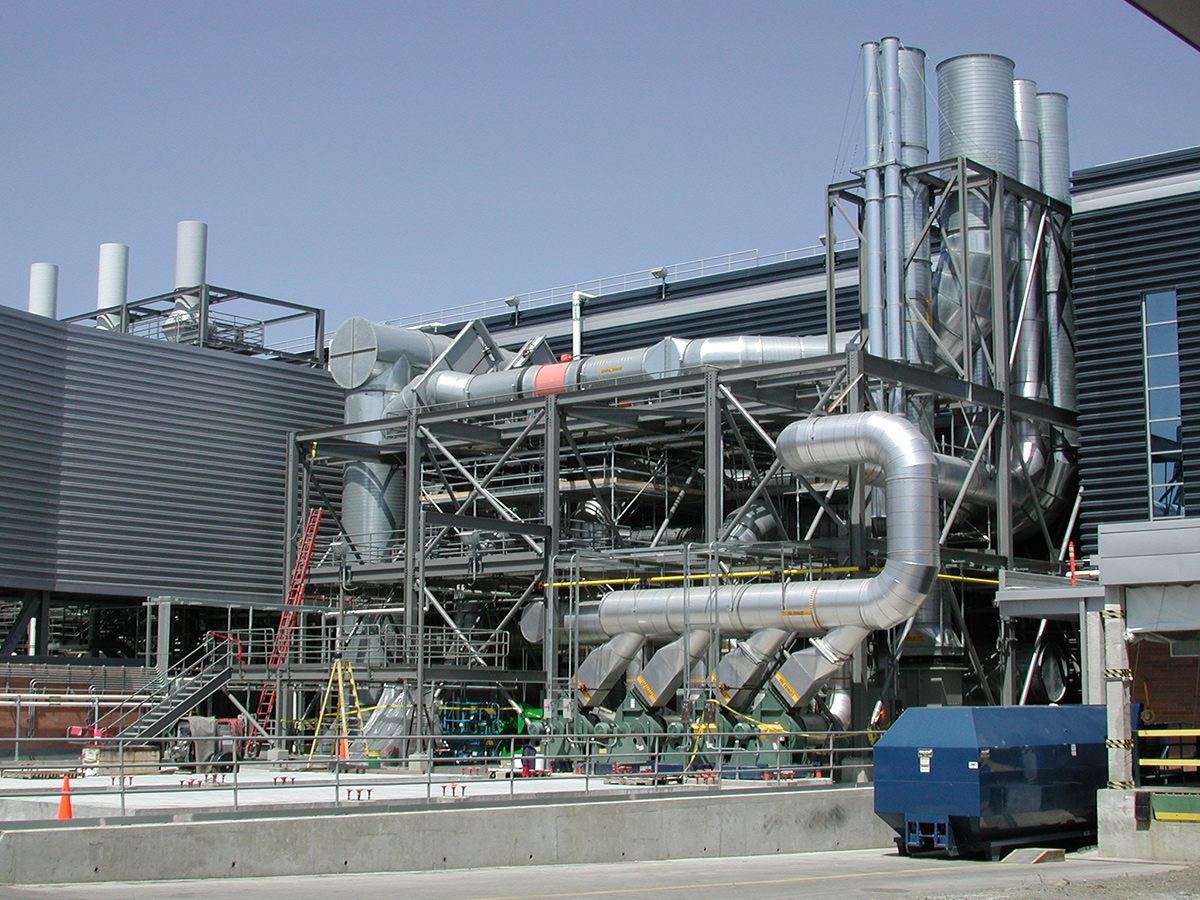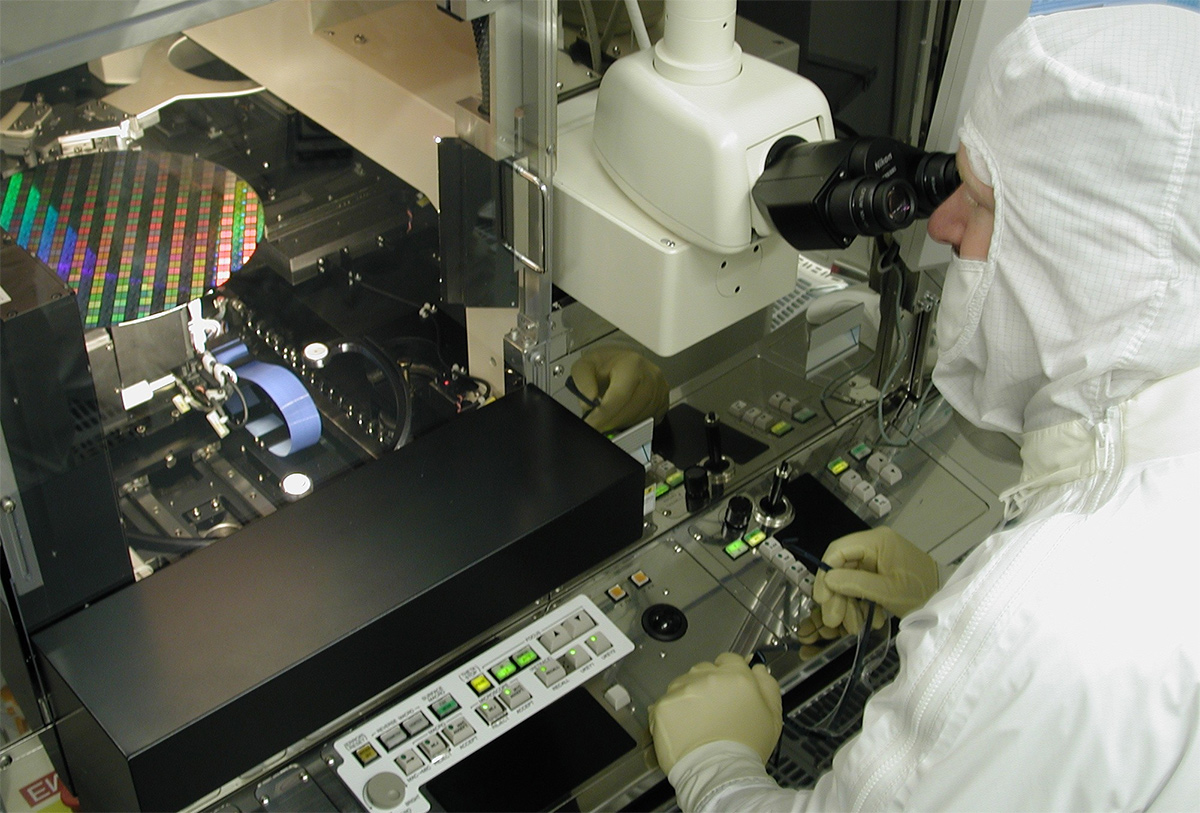Intel: Our Goal Is to Become Second Largest Foundry by 2030
Intel Foundry Services has big plans for market share.
When Intel established its Intel Foundry Services division in early 2021, it was clear that it needed the contract chipmaking unit to be on par with Samsung and Taiwan Semiconductor Manufacturing Co. in terms of scale as fabs and production nodes are getting costlier. The goal was ambitious from the start, and it looks like the company intends to be rather aggressive too as it plans to become the second largest foundry by 2030.
Big Ambitions
"Our ambition is to be the No. 2 foundry in the world by the end of the decade, and [we] expect to generate leading foundry margins," said Randhir Thakur, the president of Intel Foundry Services, in an interview with Nikkei Asia.
Getting to the No. 2 spot on the global foundry market means that Intel will have to beat Samsung Foundry (the current No. 2, according to TrendForce), which generated over $20 billion in revenue in 2021 and is on track to exceed this results in 2022. As of Q1 2022, Samsung Foundry controlled some 16.3% of the global foundry revenue, being dramatically behind market leader TSMC (53.6%), but significantly ahead of its closest peers UMC (6.9%) and GlobalFoundries (5.9%)
By contrast, Intel's IFS business unit has generated $576 million in revenue this year so far. Once the acquisition of Tower Semiconductor closes in early 2023, the Intel will add some $1.5 billion revenue per year to its IFS division. This will immediately make IFS the world's No. 7 or No. 8 foundry, but it will be still considerably smaller than Samsung Foundry in terms of revenue.
To become the world's second largest contract maker of chips, Intel will have to adopt a multi-faceted strategy that involves the following:
- Development of leading-edge process technologies which are competitive to those of Samsung Foundry and TSMC in terms of power, performance, and area (PPA); yields, and time-to-market.
- Building plenty leading-edge capacity for IFS clients. Essentially, the company will have to own more advanced capacity than Samsung Foundry does by late 2020s.
- Maintain operations and competitive positions of Tower Semiconductor by innovating on the mature technologies front.
- Land orders primarily from clients that use TSMC and Samsung Foundry, perhaps steal someone from GlobalFoundries and SMIC too.
Require Big Actions
So far, Intel has revealed a rather aggressive process technology roadmap that involves high volume production of chips on its 18A (18 angstroms or 0.18nm-class technology) in 2025 and employ High-NA extreme ultraviolet lithography tools for 18A if possible. Intel's production node plan is considerably more aggressive than that of Samsung Foundry and TSMC, which both plan to start making 2nm-class (20 angstroms-class) chips in 2025 (which means that these will be available in very late 2025 at the earliest, or rather in 2026).
On the semiconductor capacity front, Intel's plans are no less aggressive. The company is building its 20A-capable Fab 52 and Fab 62 at its camp near Chandler, Arizona; constructing the first two 18A/20A-capable modules of its site near Columbus, Ohio; building its $3.5 billion facility for advanced packaging operations; finishing up a new Intel 4-capable module at its site near Leixlip, Ireland; and constructing an all-new fab near Magdeburg, Germany. Overall, Intel plans to invest (or rather co-invest with governments and semiconductor co-investment partners like Brookfield) around $100 billion in new semiconductor fabrication facilities in the coming years.
Get Tom's Hardware's best news and in-depth reviews, straight to your inbox.
But Samsung is no less aggressive with its CapEx spending. In fact, while Intel cut its capital expenditures from $27 billion in 2022 to $25 billion recent, Samsung will invest over $33 billion in new semiconductor production capacity this year and will retain its spending at around the same level next year, the company announced recently. Of course, it is unclear how much of these sums is going to be invested in memory (3D NAND and DRAM) production facilities and how much will be used to expand logic capacity of Samsung Foundry, but the South Korean company is clearly very aggressive with its semiconductor business, so it will be particularly hard for Intel to match SF's advanced capacities.
Stealing clients from TSMC and Samsung Foundry will be even harder as large customers like Nvidia or Qualcomm have supply agreements with their foundry partners that span for years. Furthermore, it remains to be seen whether Intel's fabs located in Europe and America will be able to offer the same pricing as TSMC's and Samsung Foundry's fabs located in Taiwan and South Korea.
Geographical Advantage
It is particularly noteworthy that Intel is building up production capacity in the U.S. and Europe and so far, has not announced any plans to build fabs in Taiwan or South Korea (it will continue to operate a Tower Semiconductor fab in Japan though). While operating fabs in Europe and America is costlier than operating them in Taiwan or South Korea, building new fabs in the U.S. and Europe makes sense both from customer relationship and geopolitical points of view.
On the one hand, U.S. customers will be eager to use fabs in America due to logistics, risk management, and other factors. There are not so many chip designers in Europe that need leading-edge production technologies, but at the end of the day Intel's own product portfolio is expanding, so it will need new fabs for itself anyway. Many of Intel's potential foundry clients see advantages in fabs located in America or Europe, according to Intel.
"As we have engaged with foundry customers since launching IFS, it has become abundantly clear that many of these companies see the need for a more resilient and geographically balanced semiconductor supply chain," Thakur told Nikkei Asia.
Yet, since both TSMC and Samsung Foundry are building up new leading-edge fabs in Arizona and Texas, geographical advantages of Intel's new fabs in America may be overestimated.
On the other hand, since politicians in Europe and the U.S. want to build domestic semiconductor supply chains so not to rely on Taiwan so significantly, which is why they are eager to co-invest in new facilities with Intel.
Make or Break
For Intel, foundry business is a way to quickly increase its production volumes and therefore match its CapEx financial capabilities with those of TSMC and Samsung. Getting a new revenue stream is important for Intel, but it is not as important as increasing production volumes.
Therefore, if the company succeeds in landing orders from many clients that need advanced production technologies, this will be a success by itself as it will allow it to keep in investing in development of leading-edge nodes and increasingly expensive fabs. If it does not, it may probably cease to be a leading integrated design manufacturer (IDM) and CPU supplier over time. If the company manages to become the world's second largest foundry in the process of setting up its foundry business pursuing its main target, this will be an even bigger success. But volumes is the primary target.

Anton Shilov is a contributing writer at Tom’s Hardware. Over the past couple of decades, he has covered everything from CPUs and GPUs to supercomputers and from modern process technologies and latest fab tools to high-tech industry trends.


